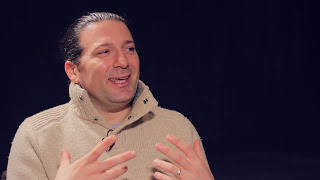In Chapter 12 of 19 in her 2012 Capture Your Flag interview, non-profit executive Courtney Spence answers "How is Your Non-Profit Learning to More Effectively Use Social Media?" Spence details how her organization's social media marketing strategy has shifted drastically over the past few years. She notes how traditionally non-profits are encouraged to invest most funds in programming and how that is finding more balance with marketing and communications initiatives involving social media. Courtney Spence returns to CYF for her Year 3 interview. As Founder and Executive Director, Spence leads non-profit Students of the World to empower college students to use film, photography, and journalism to tell stories of global issues and the organizations working to address them. Spence graduated with a BA in History from Duke University.
Transcript:
Erik Michielsen: How is your non-profit learning to more effectively use social media?
Courtney Spence: So we realize, we tell stories of others, we don’t tell our own. We realize, oh, we’re on Facebook and Twitter and we had a website, but there was not real purpose or thought or monetary investment behind those efforts. I think that we’re seeing this transition from particularly in the non-profit world, you know, it’s you do your programming and your fundraising and your management, your administration, your marketing and communication, and, you know, you wanna put all or your money into programming, and that’s – the IRS encourages that, everybody wants to see that, but the truth is, that, you know, marketing and communications are no longer just something that you do on the side, they’re really essential to programming and I think that – I mean, this is what we believe at Students of the World that, you know, storytelling and video and photography and animation are all essential parts to fulfilling a mission because we – ‘cause non-profits truly causes are about movements, and movements take people and if people don’t know that you exist, how are they gonna you’re your movement?
So we – I think you’re starting to see a shift and I think we’re just at the very, very tip of it, very beginning, but you’re seeing a shift from some non-profits and causes that understand the real need to invest in social media and that it’s not something we do on the side and it’s not something we should be ashamed about doing or that we should downplay, it’s something that should be integral to our programming because that will make us more effective fundraisers, it’ll make us more effective as an organization, it’ll help us create a movement, and that is what is so exciting about social media and the possibilities but I think that’s also the great challenge is how do we – when budgets have to be slashed, when organizations can’t spend as much time, media marketing is like one of the first things to go and I think that’s a big mistake and that’s quite frankly a mistake that we made at Students of the World.
And it was only in the last, again, 6 months where it was like we can no longer afford to just sort of – pardon me, but kind of half ass that. We have to really invest in that, because that’s what we do, but that’s also how we’re gonna go build our movement and do what we do much better and bigger than we ever dreamed. So our whole approach to social media has drastically shifted.























